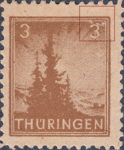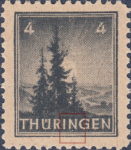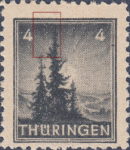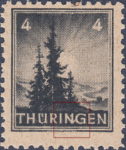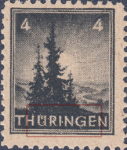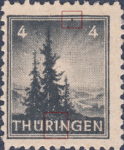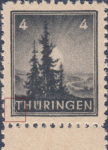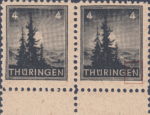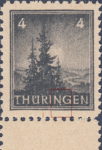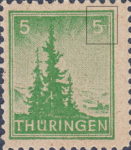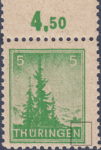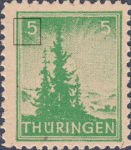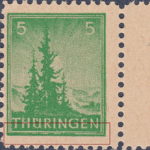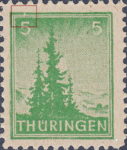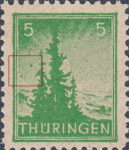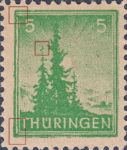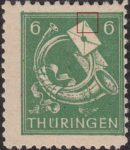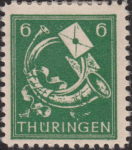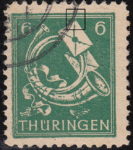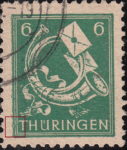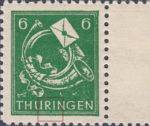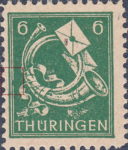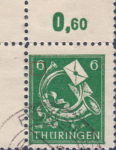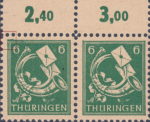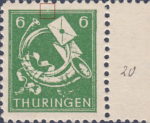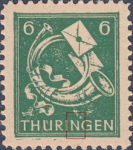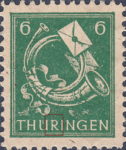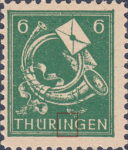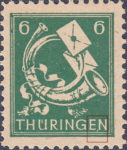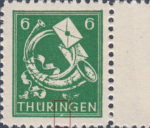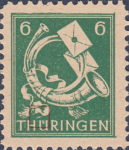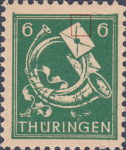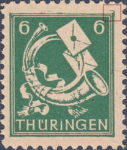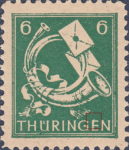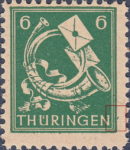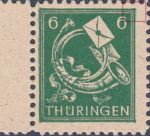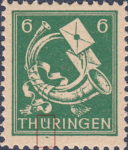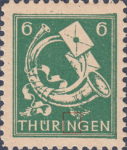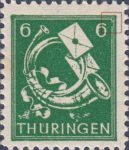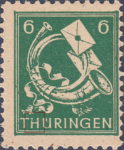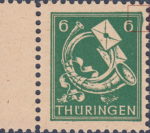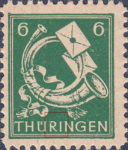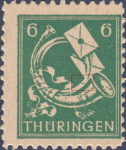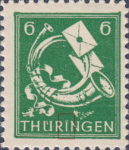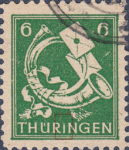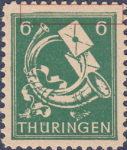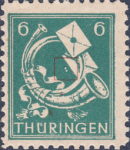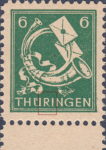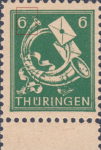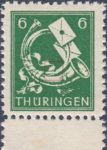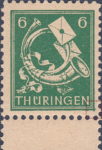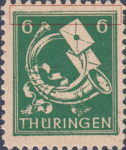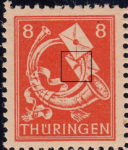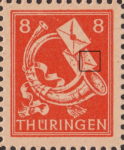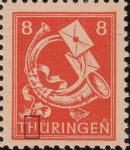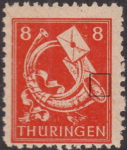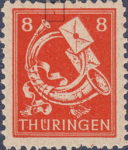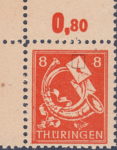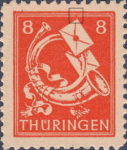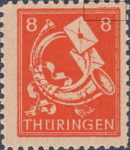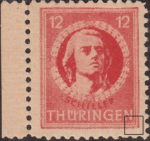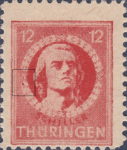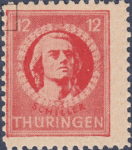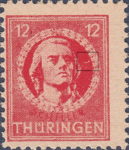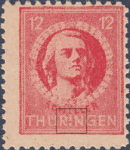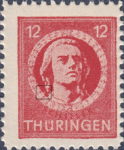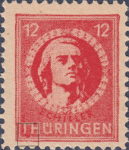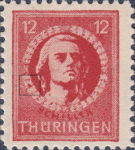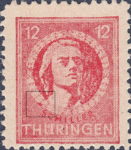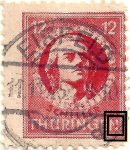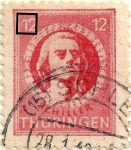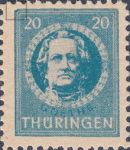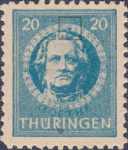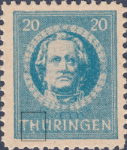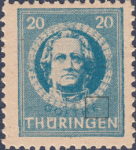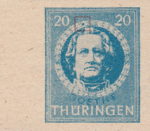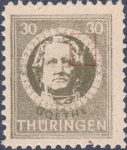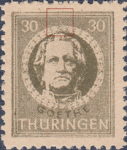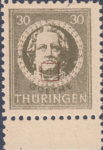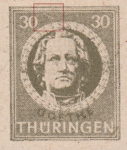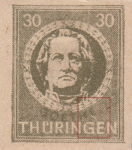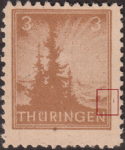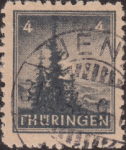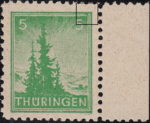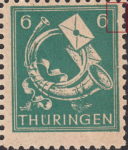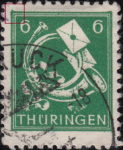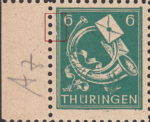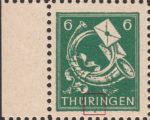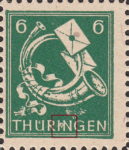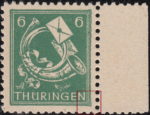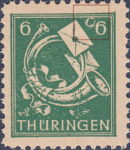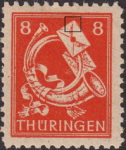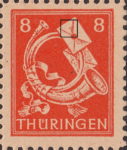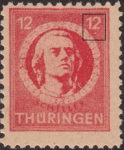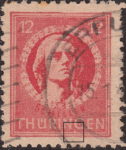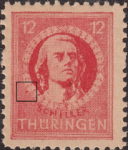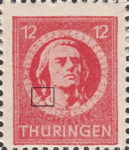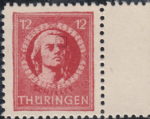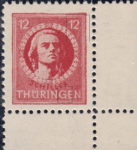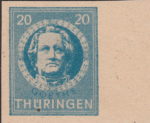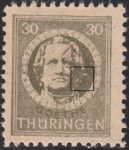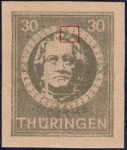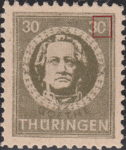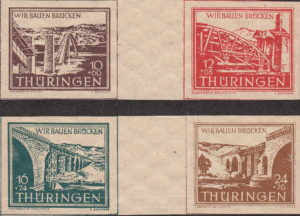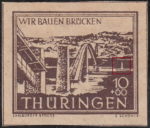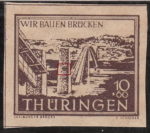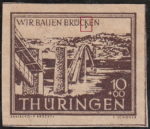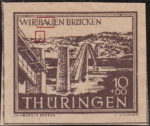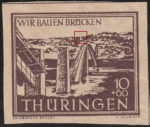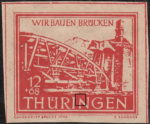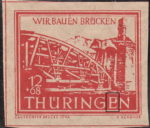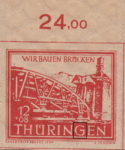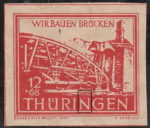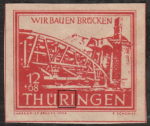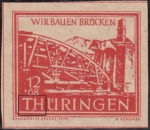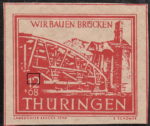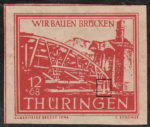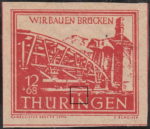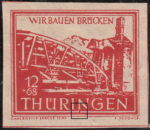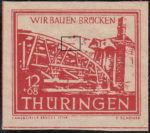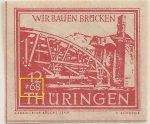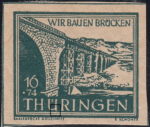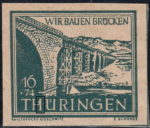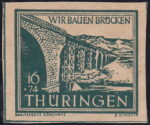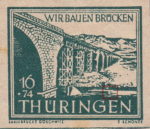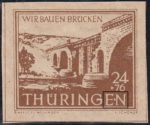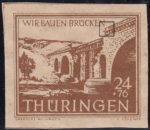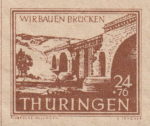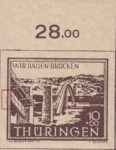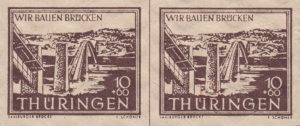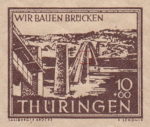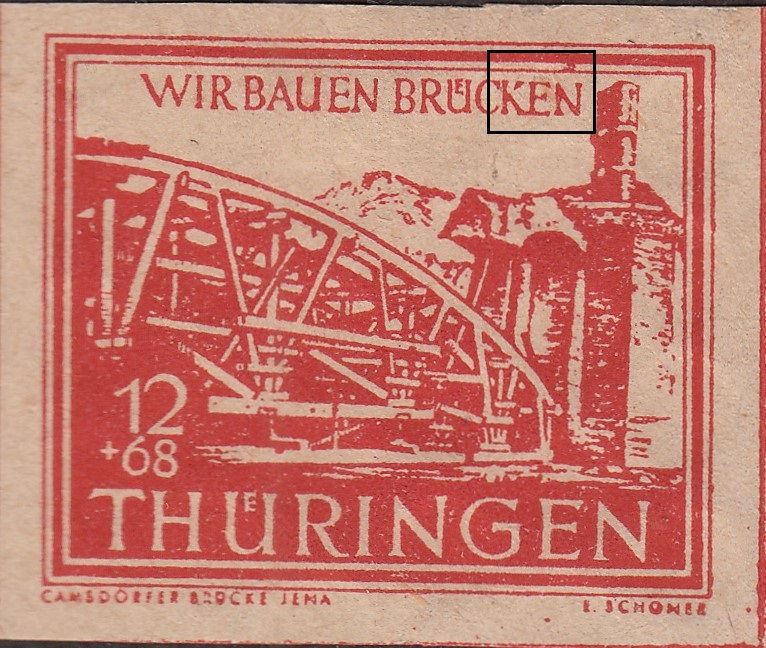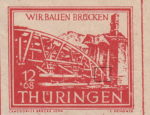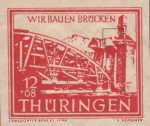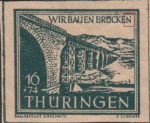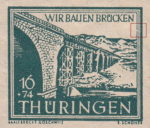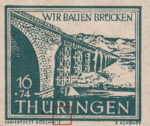Soviet Occupation Zone: Thuringia (Thüringen)
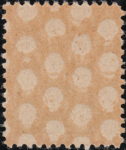 |
| Economy gum on stamps of Thuringia. |
1 October 1945 – 1 January 1946. Definitive issue. Printed in sheets of 100 (10 x 10) on various types of papers with regular or “economy gum”. Perforation line 11, denominations of 20 and 30 pfennig also imperforate.
The gum
Economy gum (Spargummierung or Spargummi) was used in times of economic need to save raw materials which were needed for production of gum. The gum was applied in such a way that parts of stamps sheets were left without the gum.
The paper
Stamps were printed on 14 different paper types and gum combinations:
| Paper types and gum by denomination values in pfennig | ||||||||||||
|---|---|---|---|---|---|---|---|---|---|---|---|---|
| Paper | Gum | 3 | 4 | 5 | 6 | 8 | 12 I | 12 II | 20 per | 20 imp | 30 per | 30 imp |
| grayish white thicker paper (0.075-0.1 mm) with steep rising striations | thick and yellowish, also with vertical lines | x | x | x | x | x | x | x | x | x | ||
| economy gum | x | x | x | x | x | x | x | x | x | x | ||
| grayish white thicker paper (0.075-0.1 mm) with steep falling striations | thick and yellowish, also with vertical lines | x | x | x | x | x | x | x | x | x | ||
| economy gum | x | x | x | x | x | x | x | x | x | x | ||
| rough grayish thick paper (0.09-0.11 mm) with gently rising striations | thick, fragile, also with vertical lines | x | x | |||||||||
| yellowish to reddish tinted paper (0.08-0.105 mm) | thick, a bit granular | x | x | x | x | x | ||||||
| yellowish to reddish tinted paper with fine net structure (0.07-0.08 mm) | brownish, shiny | x | ||||||||||
| whitish to grayish paper (0.065-0.09 mm) with fine net structure | white to yellowish, dull | x | x | x | x | x | x | x | x | x | x | x |
| economy gum | x | x | x | x | x | x | x | |||||
| grayish paper (0.06-0.08 mm), smoother, with fine net structure | bight, shiny | x | x | x | x | x | x | x | ||||
| grayish to yellowish granite paper (0.065-0.085 mm) with small wooden residues | grayish, dull | x | x | x | x | x | ||||||
| yellowish thick paper (0.09-0.11 mm) with heavy net structure | yellowish, dull | x | x | x | x | x | x | x | x | |||
| whitish to yellowish tinted wood-free thick paper | gum white, applied horizontally | x | x | x | ||||||||
| whitish thin paper (impression visible on the back) with fine net structure | economy gum | x | x | x | x | x | ||||||
Varieties and types
| TYPES | ||
|---|---|---|
| 12 pf., red | ||
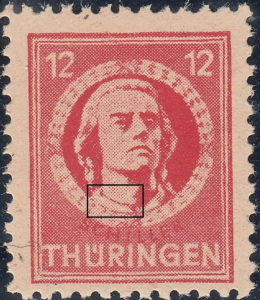 |
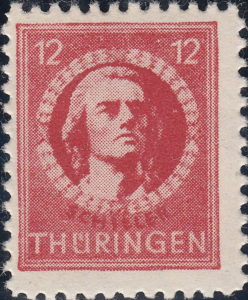 |
There are two types of 12 pf. stamp:
|
| Type I | Type II | |
27 March 1946. Rebuilding of German National Theater in Weimar. Different paper types.
| Paper types, gum and watermarks | |||
|---|---|---|---|
| Paper | Gum | Perforation | Watermark |
| whitish, thin (0.046-0.06 mm) | none | imperforate | Watermark “stairs”: ascending or descending |
| yellowish thick paper (0.09-0.11 mm) with heavy net structure | yellowish, dull | serrate roulette | none |
| whitish to grayish paper (0.065-0.09 mm) with fine net structure | white to yellowish, dull | serrate roulette | none |
| There are 12 different types | ||
|---|---|---|
| IV | 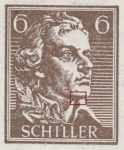 Souvenir sheet |
Tiny white dot below Schiller’s chin. |
| VII | 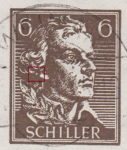 Souvenir sheet |
White dot between Schiller’s ear and hair. |
| VIII | 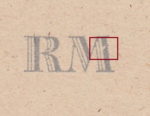 Souvenir sheet |
Incision in letter M of RM. |
| XI | 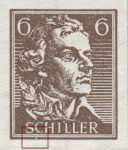 Souvenir sheet |
White dot on frame below letters SC in SCHILLER. |
| XII | 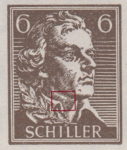 Souvenir sheet |
White dot on Schiller’s neck. |
| UNLISTED VARIETIES | ||
|---|---|---|
| 1 | Big white spot above the last letter E in GOETHE. Souvenir sheet |
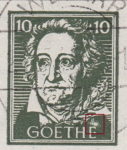 |
30 March 1946. Bridge reconstruction. Printed in sheets of 50 (5 x 10) on paper with regular or “economy gum”. Imperforate.
A. Stamps
B. Souvenir sheet
Souvenir sheets were printed in two runs. There are three types of sheets of the first and one type of the second run.
| TYPES | |||
|---|---|---|---|
| I | 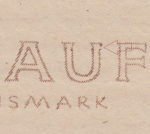 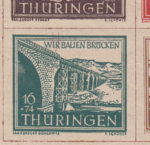 Souvenir sheet |
|
|
Bibliography
- Michel Deutschland-Spezial 2005, Band 2: Ab Mai 1945 (Alliierte Besetzung bis BRD), Schwaneberger Verlag GmbH, ISBN 3-87858-145-9

